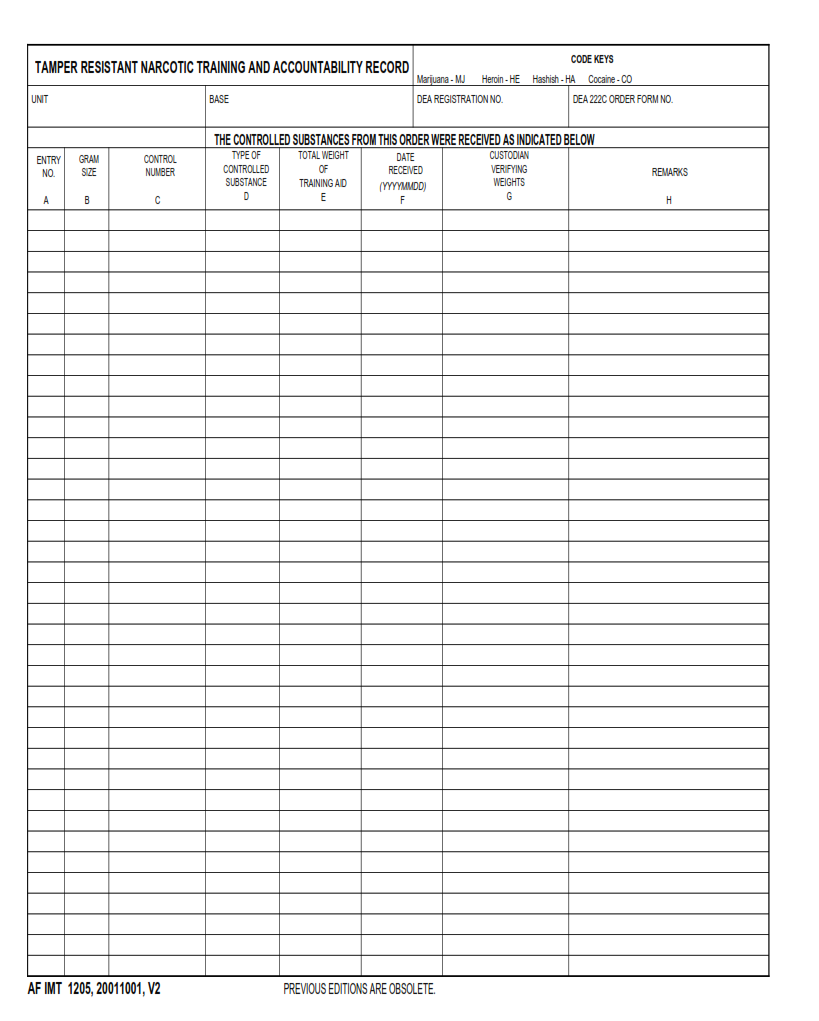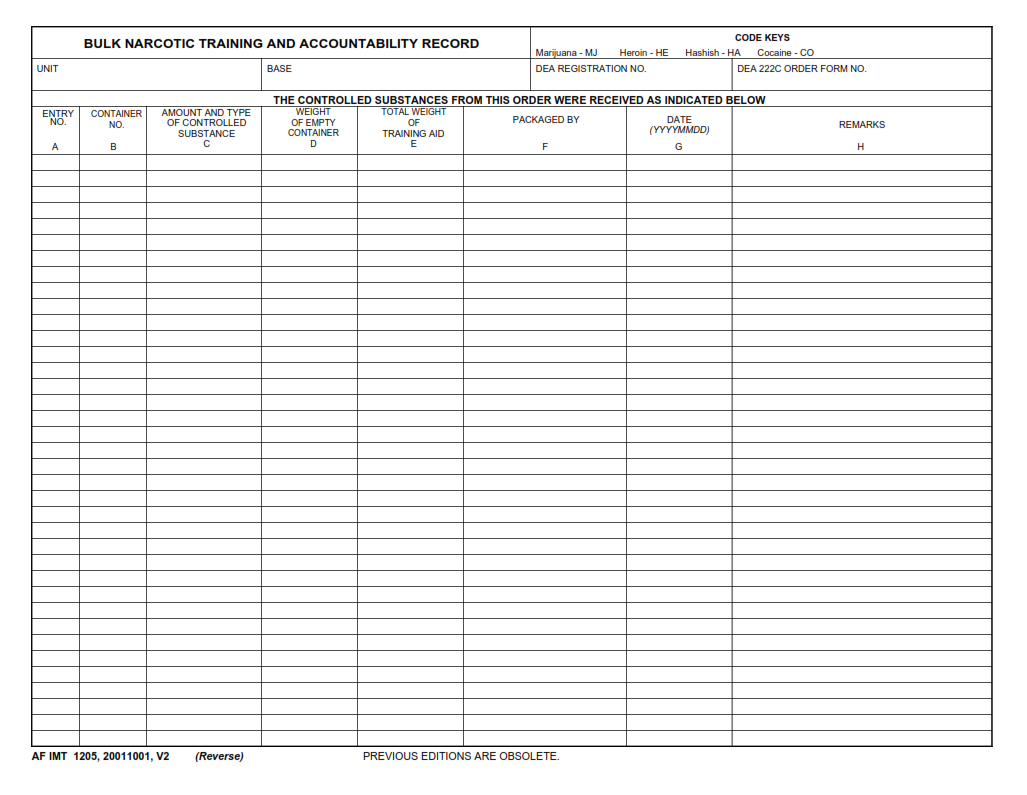FINDERDOC.COM – AF1 From 205 – Tamper Resistant And Bulk Narcotic Training Accountability Record – The Armed Forces of the United States of America need to be prepared for all types of threats. This includes adversaries who use unconventional warfare tactics, such as tampering with equipment and documents. To ensure that their equipment is tamper-resistant and bulk narcotics training accountable, the military is requiring all service members to take a tamper-resistant and bulk narcotics training accountability record exam.
Download AF1 From 205 – Tamper Resistant And Bulk Narcotic Training Accountability Record
| Form Number | AF1 From 205 |
| Form Title | Tamper Resistant And Bulk Narcotic Training Accountability Record |
| File Size | 205 KB |
| Date | USCIS Forms |
What is an AF1 From 205?
The AF1 from 205 is a tamper-resistant, bulk narcotic training accountability record used in the healthcare industry. This form is designed to track the dispensing of controlled substances such as opioids and other narcotic medications, ensuring that they are being distributed safely and legally. The AF1 from 205 includes information on the patient receiving the medication, their medical history, and the prescription details.
In addition to tracking controlled substance distribution, the AF1 from 205 also serves as a training tool for healthcare professionals responsible for administering these types of medications. By using this form, staff members can ensure that they are following proper procedures and protocols when dealing with narcotics. The tamper-resistant design of the form helps prevent any unauthorized access or alteration to patient records.
Overall, implementing tools like the AF1 from 205 is essential in maintaining safe and legal practices when handling controlled substances in healthcare settings. By utilizing rigorous training programs and accountability measures such as this form, organizations can help combat drug abuse while providing necessary pain management solutions for patients in need.
What is the Purpose of AF1 From 205?
AF1 from 205 is a tamper-resistant and bulk narcotic training accountability record. It serves as a critical tool for tracking the use of controlled substances by medical professionals in hospitals and other health care facilities. The purpose of this form is to promote transparency, accountability, and patient safety.
The AF1 from 205 form helps healthcare professionals keep accurate records of all controlled substances used in their facility. This includes everything from opioid painkillers to sedatives, anesthetics, and stimulants. By using AF1 from 205, healthcare providers can better manage inventory levels, reduce the risk of drug diversion or theft, and ensure that patients receive appropriate doses of medication.
Ultimately, the purpose of AF1 from 205 is to help healthcare providers comply with federal regulations around controlled substance use while also safeguarding patient health and well-being. By providing a standardized system for tracking narcotic medications in health care settings, this form helps protect patients from abuse or misuse while supporting responsible prescribing practices among medical professionals.
Where Can I Find an AF1 From 205?
If you’re in search of an AF1 from 205, it’s important to understand what exactly it is. The AF1 from 205 refers to the Tamper Resistant and Bulk Narcotic Training Accountability Record used by healthcare professionals. This record is used for documenting controlled substances with tamper-resistant features that make it difficult to alter or duplicate. With the increasing concern over drug abuse and addiction, this record helps ensure accountability and transparency in the use of narcotics.
If you need an AF1 from 205, your best bet is to check with your institution’s pharmacy or medical supply department. They should have a stock available for purchase or may be able to order them for you if they don’t currently carry them. It’s important to note that because these records are tamper-resistant, they can only be obtained through authorized vendors with proper licensing.
Overall, finding an AF1 from 205 shouldn’t be too difficult as long as you go through the proper channels. These records play an essential role in maintaining accurate documentation and accountability when it comes to handling controlled substances in healthcare settings.
AF1 From 205 – Tamper Resistant And Bulk Narcotic Training Accountability Record
The AF1 form is a tamper-resistant accountability record that is used to document the administration of bulk narcotic drugs in medical facilities. The form itself contains detailed information such as the name of the patient, drug dosage, administration time and date, as well as the name of the administering nurse or doctor. Additionally, this form serves as a legal record that can be used to track all controlled substances within a hospital or clinic.
To ensure proper use and maintenance of these forms, healthcare personnel must undergo extensive training in bulk narcotic drug management. This includes learning how to properly administer and document narcotics using AF1 forms while adhering to state and federal regulations. Moreover, periodic audits are conducted to ensure compliance with regulatory requirements and accountability for all controlled substances.
In summary, the AF1 form plays an essential role in ensuring safe handling and dispensing of bulk narcotic drugs within medical facilities. Its tamper-resistant design coupled with stringent training requirements promotes accountability among healthcare providers while also protecting patients from potential harm associated with improper drug administration.
AF1 From 205 Example

